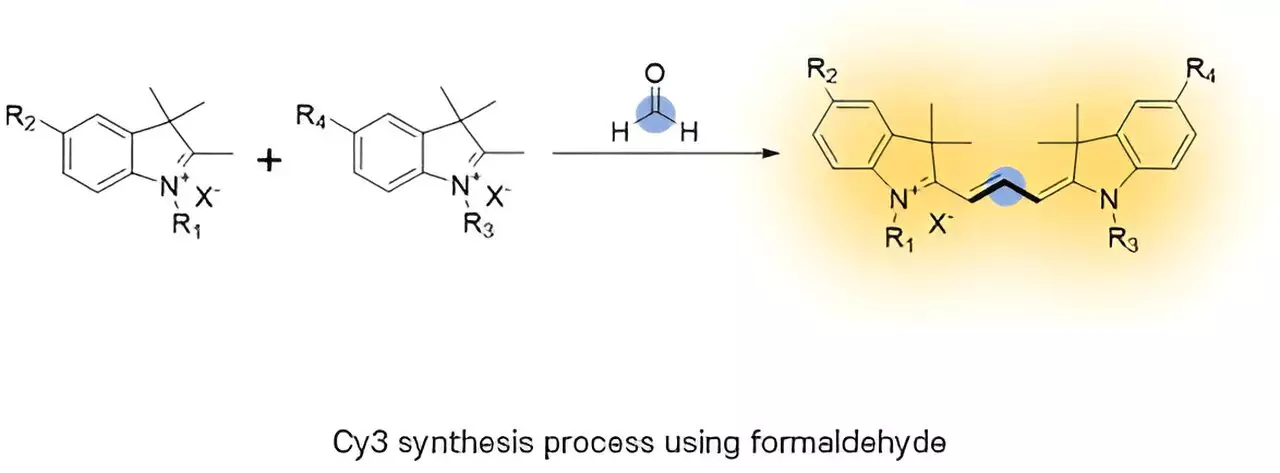Recent advancements in the field of organic chemistry have led a dedicated research team to unveil a novel method for synthesizing organic fluorophores with a focus on cost-effectiveness and increased atom efficiency. Their breakthrough revolves around the use of formaldehyde, the most basic form of carbon, marking a significant shift in how important fluorescent compounds are produced. This pivotal research, published in the esteemed journal Angewandte Chemie International Edition on September 18, has implications that resonate across various scientific domains, particularly in medical diagnostics and bioimaging applications.
Organic fluorophores are integral to numerous applications, enabling crucial processes such as cancer cell tracking and genetic analyses. Among these fluorescent markers, trimethine cyanine (Cy3) is particularly noteworthy. Traditionally, the synthesis of Cy3 has been encumbered by high molecular weight compounds and complex chemical processes that not only generate numerous byproducts but also reduce the overall yield through subpar atom efficiency. This inefficiency has prompted researchers to seek alternatives that could simplify the process while maintaining effectiveness.
The research team, led by prominent figures in chemistry, shifted their focus from the intricacies of conventional chemical methods to the straightforward yet effective use of formaldehyde (HCHO). This molecule, consisting of a single carbon atom bonded to two hydrogen atoms and one oxygen atom, is often disregarded in organic synthesis due to its potential toxicity when interacting with biological compounds. However, the researchers cleverly leveraged its properties to develop new carbon-carbon bonds, thus streamlining the synthesis process of Cy3.
By altering the synthesis route to utilize formaldehyde, the team not only reduced the required molecular size but also transformed a tedious multi-step process into a simple, one-pot reaction. Such a shift not only boosts efficiency but also minimizes waste and the release of harmful byproducts typical in older methods.
Another compelling aspect of this research is its broader applicability, particularly in examining biological implications. The team conducted analyses on rat small intestine tissues, observing a marked difference in fluorescence between inflamed and healthy tissues. This phenomenon—a weaker fluorescence signal in the inflammation-induced group—was linked to reduced formaldehyde levels during metabolic processes associated with inflammation. Such observations lend credence to the idea that this innovative synthesis method could be effectively applied in vivo, further emphasizing the relevance of this research in practical, clinical settings.
As Professor Young-Tae Chang articulated, the successful synthesis of Cy3 using formaldehyde sets a new precedent in organic fluorophore production. The implications of this research are vast, covering not only more economical production methods but also potential applications in live cell imaging and other groundbreaking biomedical techniques. With further exploration and validation, the team’s discoveries could redefine standard practices in bioimaging and diagnostics, paving the way for more accessible and efficient scientific investigations. The horizon is bright for organic chemistry, and it will be fascinating to observe how these innovations propel future research and applications.


Leave a Reply